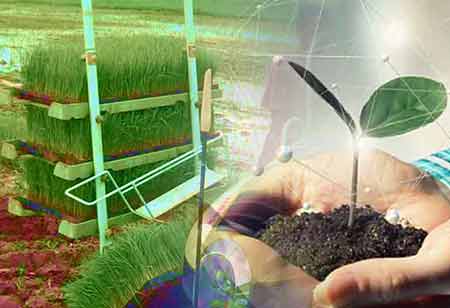Thank you for Subscribing to Agri Business Review Weekly Brief
Benefits Of Hydroponics
Hydroponics works in various scenarios—from growing a small collection of herbs in a kitchen to numerous plants in a large-scale commercial operation.

By
Agri Business Review | Wednesday, August 17, 2022
Stay ahead of the industry with exclusive feature stories on the top companies, expert insights and the latest news delivered straight to your inbox. Subscribe today.
Hydroponics is a great way to try growing healthy plants at home without using soil.
Fremont, CA: Hydroponics is a means of growing plants indoors without using soil. Instead of pulling mineral nutrients required for growth from the ground, plants get all of their nutrition using a nutrient solution supplied to their roots.
Hydroponics works in various scenarios—from growing a small collection of herbs in a kitchen to numerous plants in a large-scale commercial operation. People with narrow or no outdoor space, like urban residents, apartment dwellers, or renters who can’t have an outdoor garden, find hydroponic growing especially useful. Many types of plants grow well hydroponically.
How Does a Hydroponics System Work?
While plant growth concerns many metabolic processes, plants grow mainly because of three main items: essential nutrients, water, and sunlight. In a conventional garden, soil anchors the plant and acts as a reservoir for water and nutrients.
A hydroponics system eradicates the need for soil by providing a nutrient-charged aqueous solution directly to the roots that keep the plant fed and hydrated, while supplemental lighting solutions imitate sunlight.
More on soil-free growing
Under a hydroponics growing system, plants are either hanging directly in the aqueous solution or grown in a soil-free medium, for example, coconut coir, rock wool, LECA, vermiculite, or perlite. The plant’s roots accept the nutrient solution in an active or passive system.
• Active systems employ pumps to circulate and aerate nutrient solutions, providing the nutrients to the plant’s root zone for uptake.
• Passive systems have no pumps or mobile parts. The nutrient solutions are nurtured to the root zone using flooding, gravity, or capillary action.
More on supplemental lighting
Since natural light is limited indoors, plants grown in a hydroponics system usually receive supplemental lighting. Hanging lights above the plants and leading their brightness imitates the natural cycles of daylight and darkness that plants require to grow.
7 Advantages of Hydroponics for Gardeners
While it may sound complicated, growing plants in a hydroponics system have many benefits. Some of the most notable include:
1. An extended growing season
Cold climates with chilly winter temperatures and brief day lengths disallow plant growth. However, with a hydroponics system, plants can be grown hydroponically year-round since the grower controls the temperature, light, and nutrient supply.
2. Improved growth and yield
Hydroponics systems generally result in faster-growing, higher-yielding plants. This is possible due to the enhanced oxygen levels in the nutrient solution and the carefully controlled environmental factors.
Increasing a plant’s oxygen levels stimulates root growth and enhances nutrient uptake. These optimal growing conditions lead to less plant stress and a more bountiful harvest.
3. Higher plant density
Plants grown in soil have a rigid spacing that must be ensured to allow each plant equal access to the soil’s somewhat limited water supply and nutrients.
Since hydroponics systems deliver a more nutrient-charged solution to the root zone, plants can be grown closer together without competing for root space.
4. Plants can grow anywhere.
Unlike conventional gardens that require outdoor space for plants, hydroponics systems are easily incorporated into many homes, regardless of size or location.
5. Less water consumption
Even though hydroponic systems depend primarily on the water to grow plants, they use between 80 to 90% less water than plants grown in the ground. In conventional gardening, a large amount of water is applied to the soil to allow adequate moisture to reach the root zone. However, when moving using the soil, the water evaporates, and only a percentage of it reaches the roots.
In hydroponics, the water directly reaches the roots, with little lost to evaporation. In numerous systems, the nutrient solution is also recirculated several times before becoming unusable and discarded, further improving water efficiency.
6. Fewer pest problems
Since hydroponics systems are indoors, pests aren’t as prevalent and have controlled entrances. As a result, insects find it more challenging to infiltrate the system and attack plants. Plus, fewer pest issues mean little to no need for pesticides.
7. Easier to harvest mature plants
Plants grown in hydroponics systems are generally grown on counters, benches, tables, etc., which puts them at waist height for most growers. At this height, mature plants are simpler to harvest since there’s no need to bend down or kneel to reach their plants.
This is a crucial advantage for growers with limited mobility or physical ailments that prevent them from gardening at ground level.





